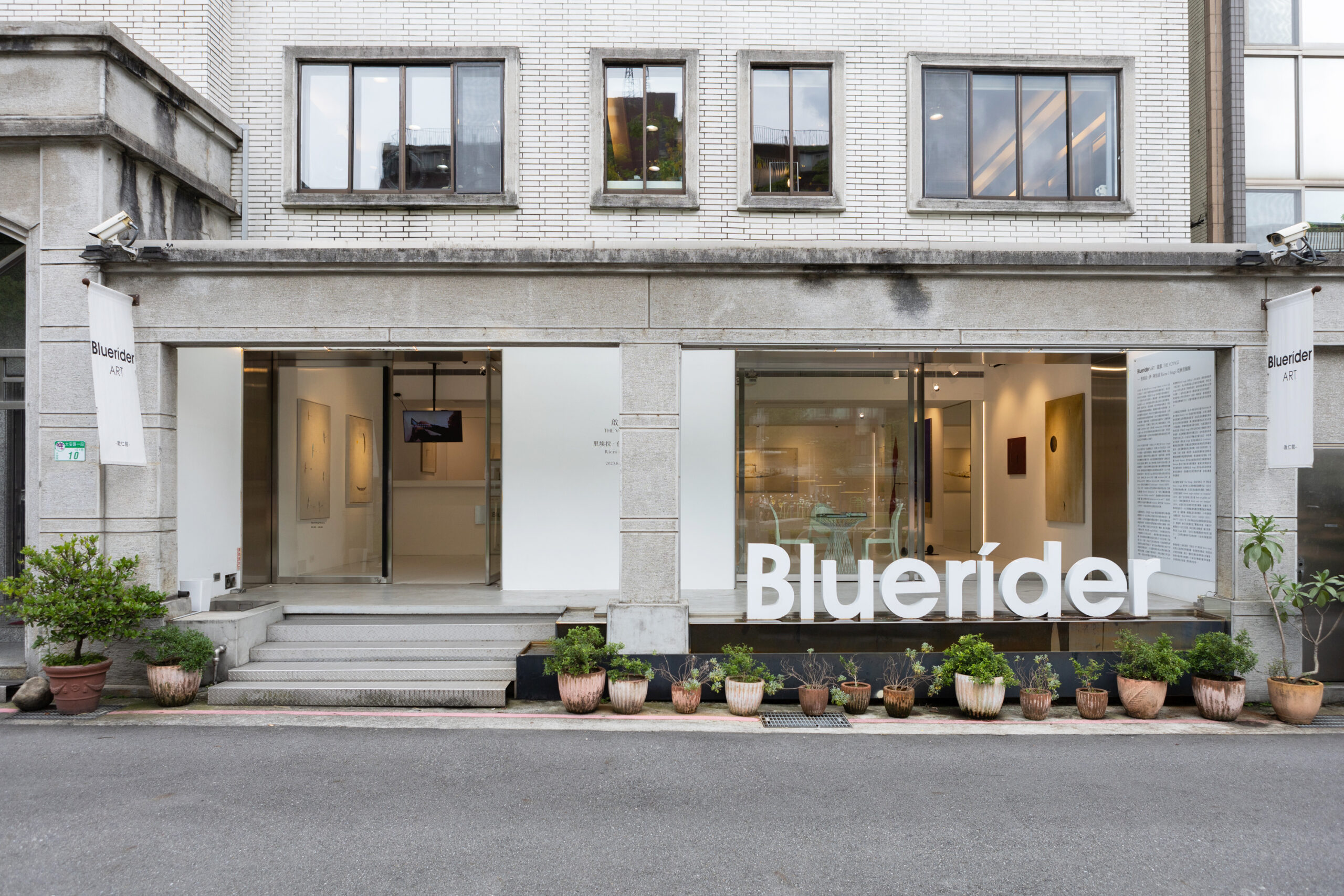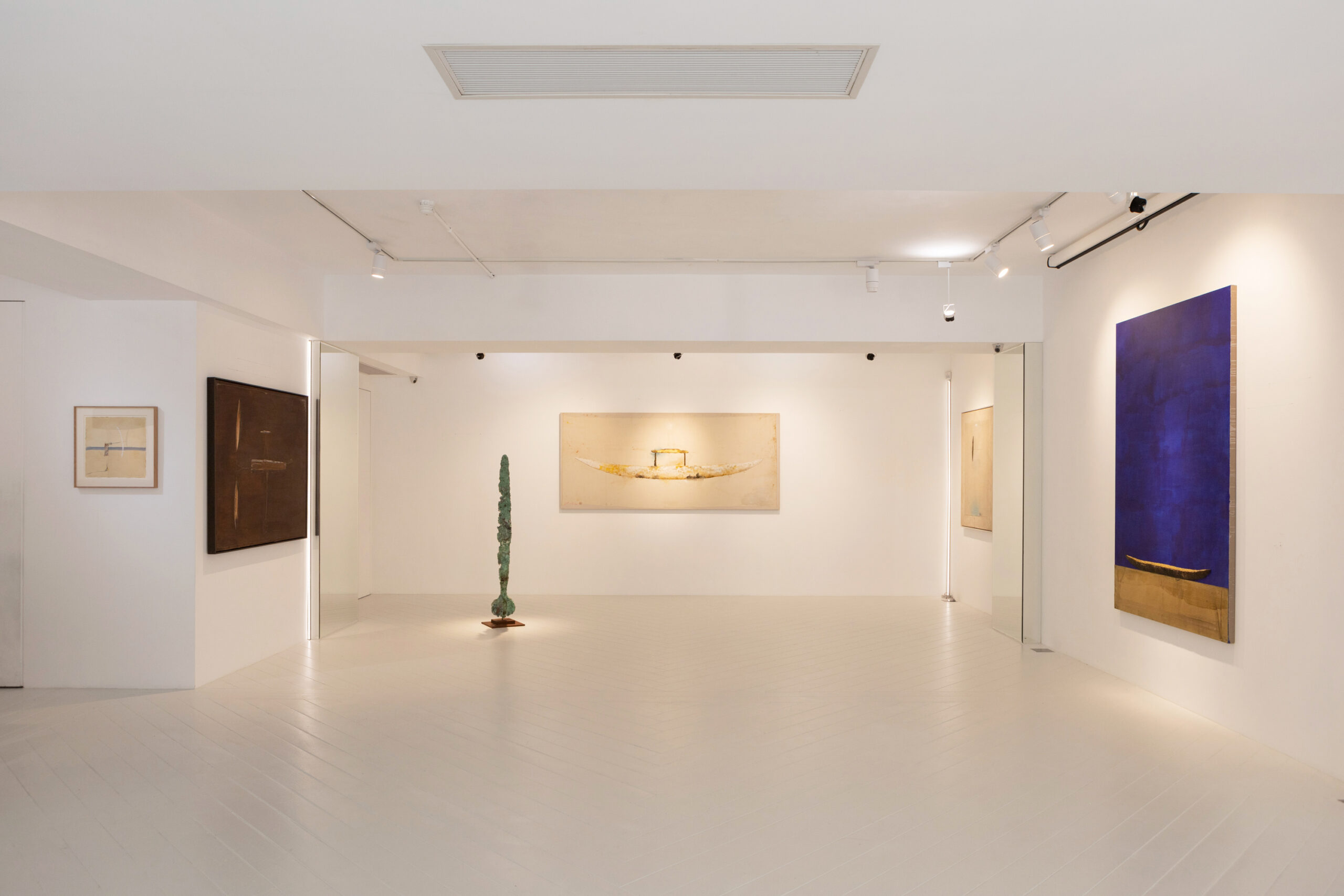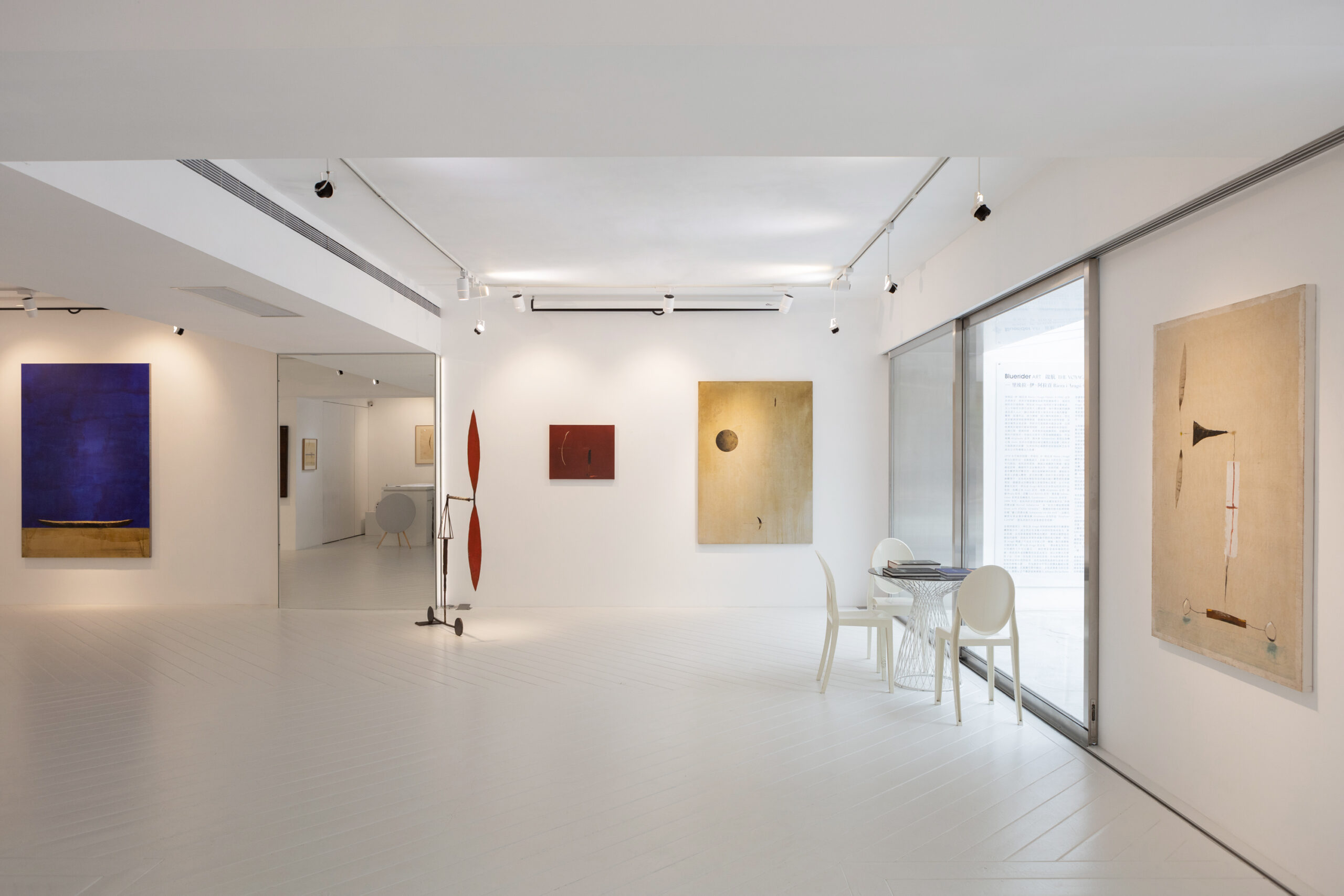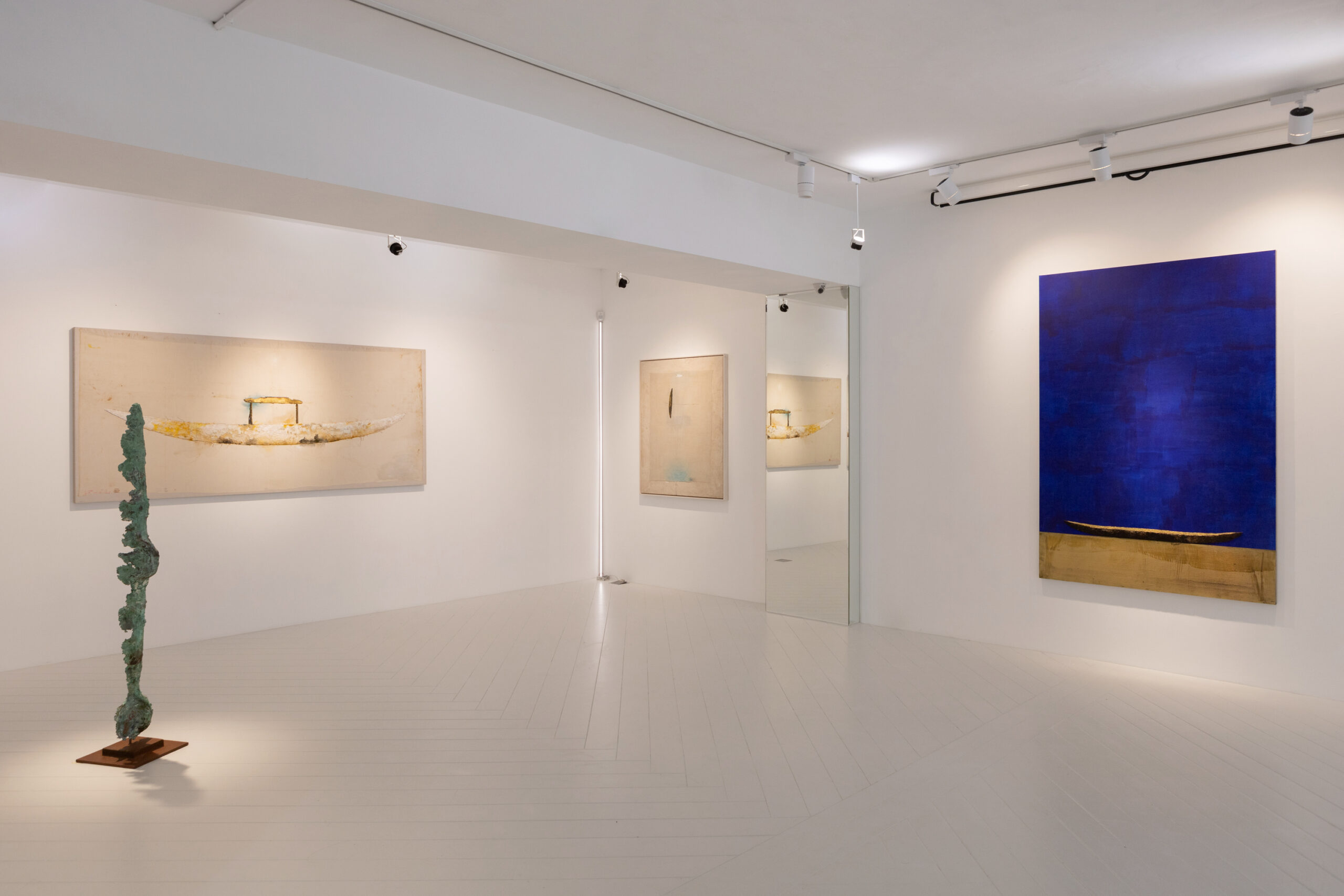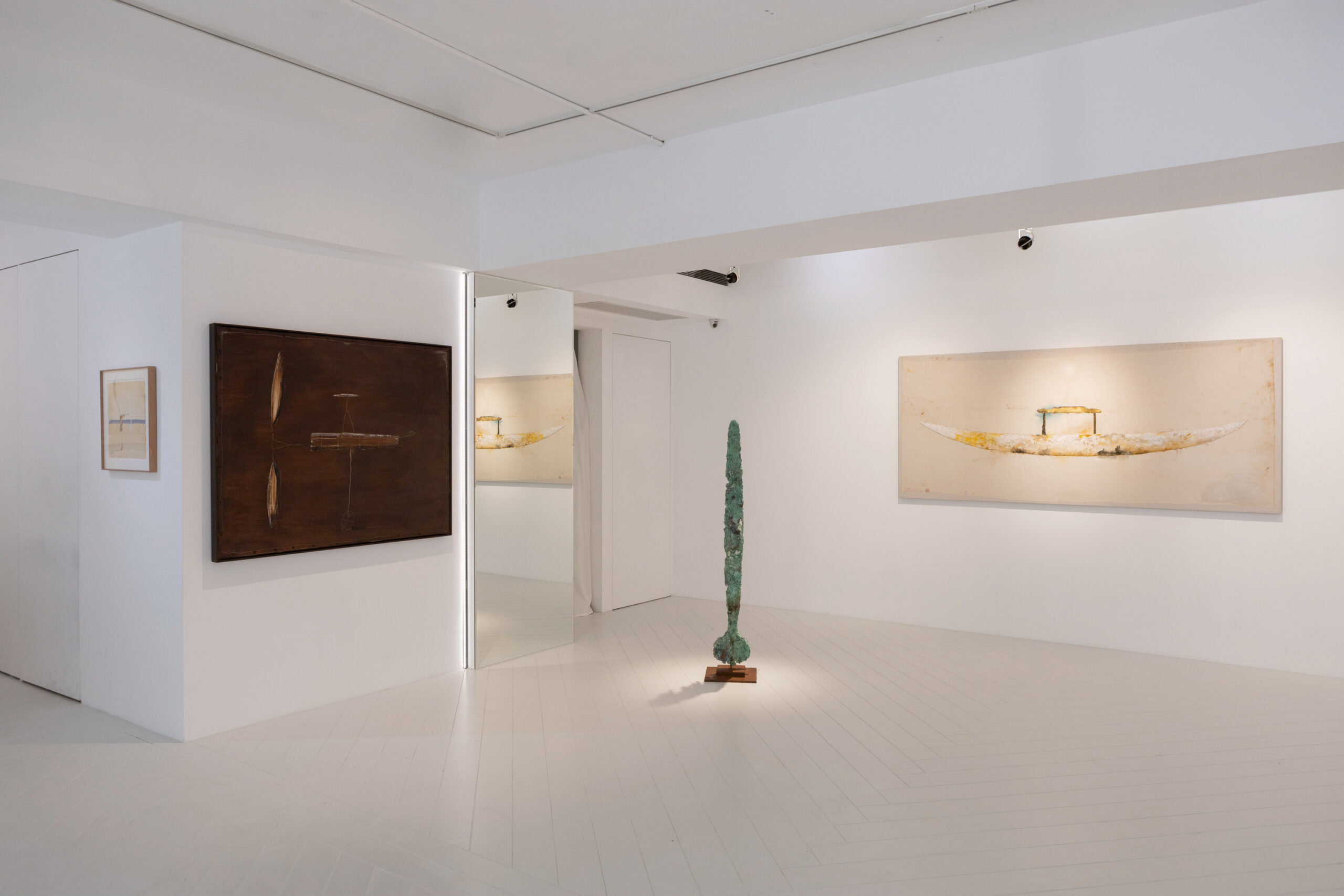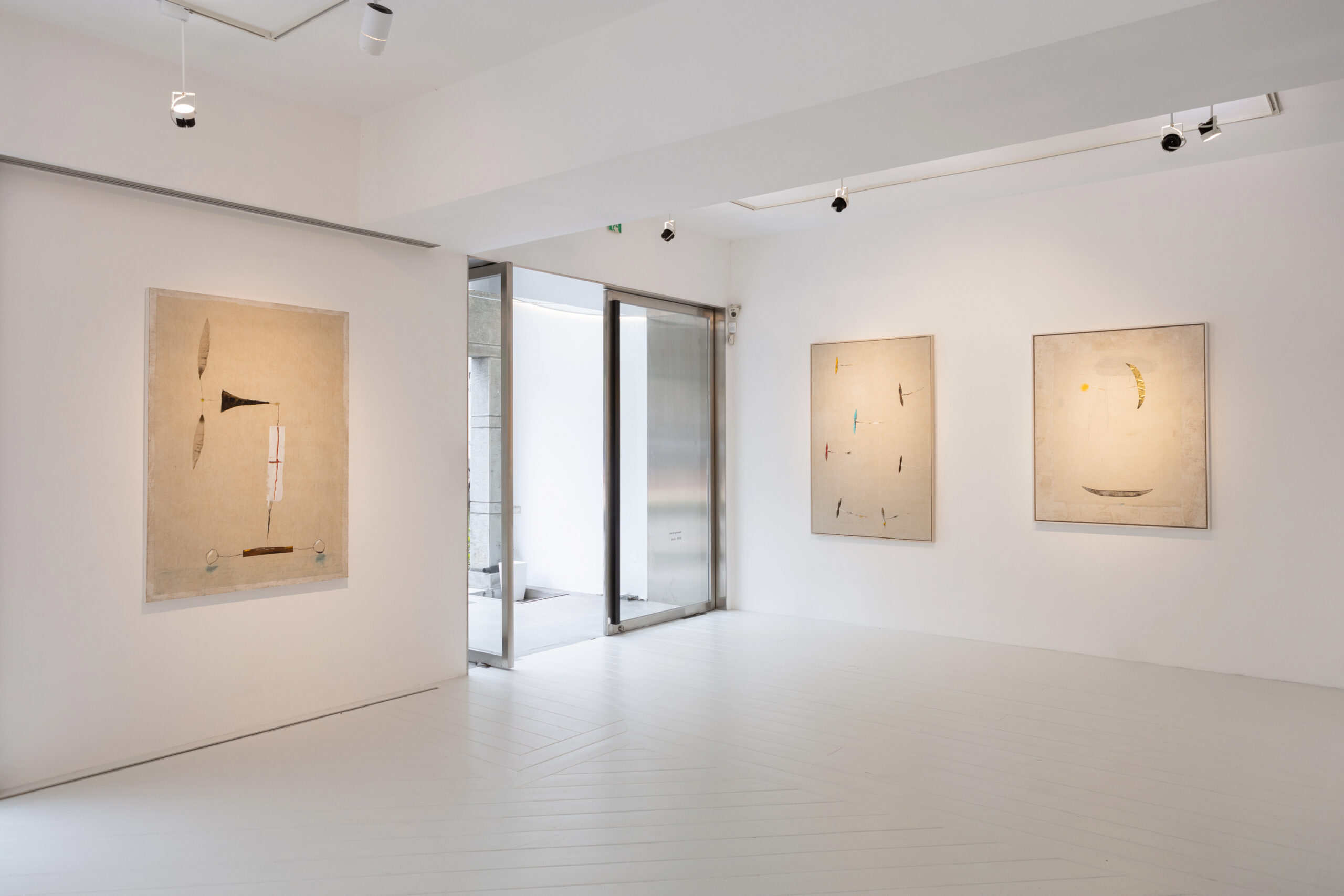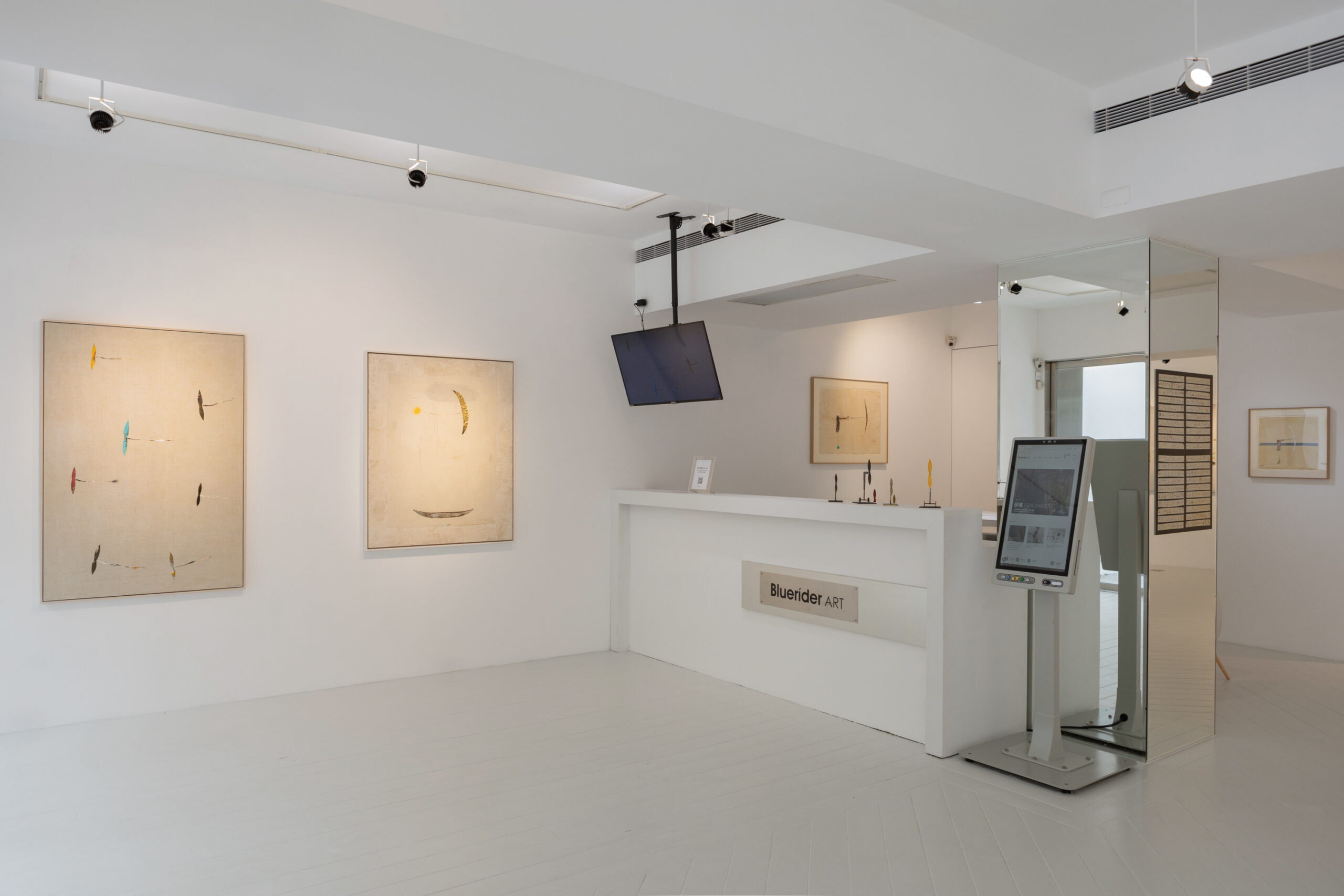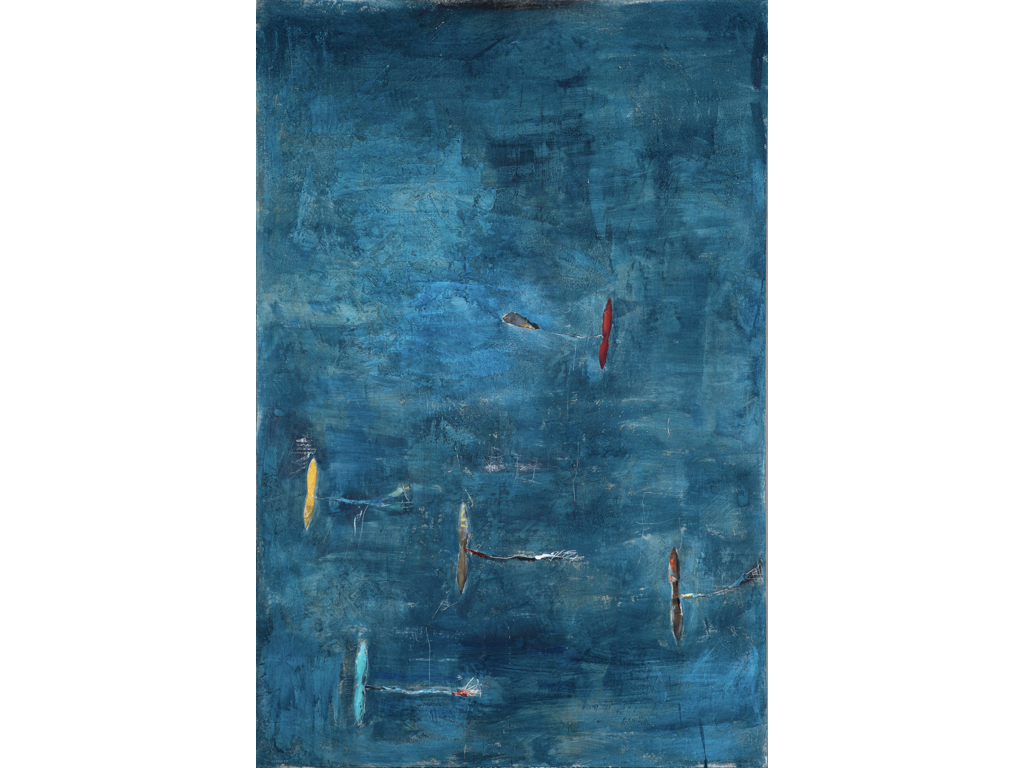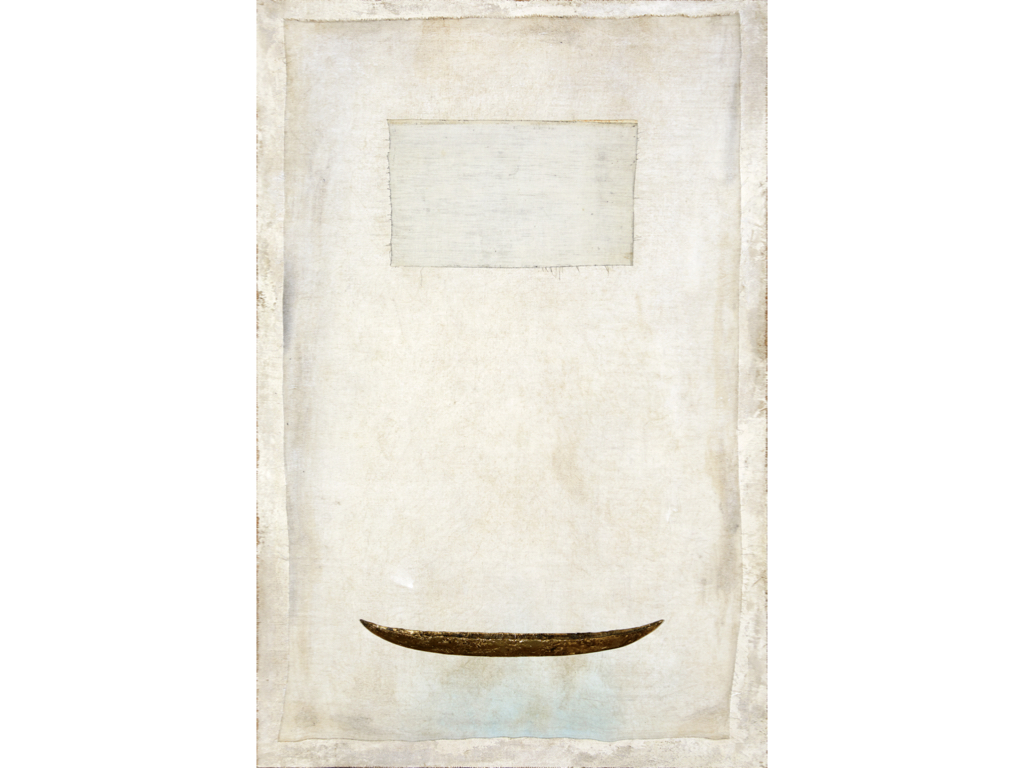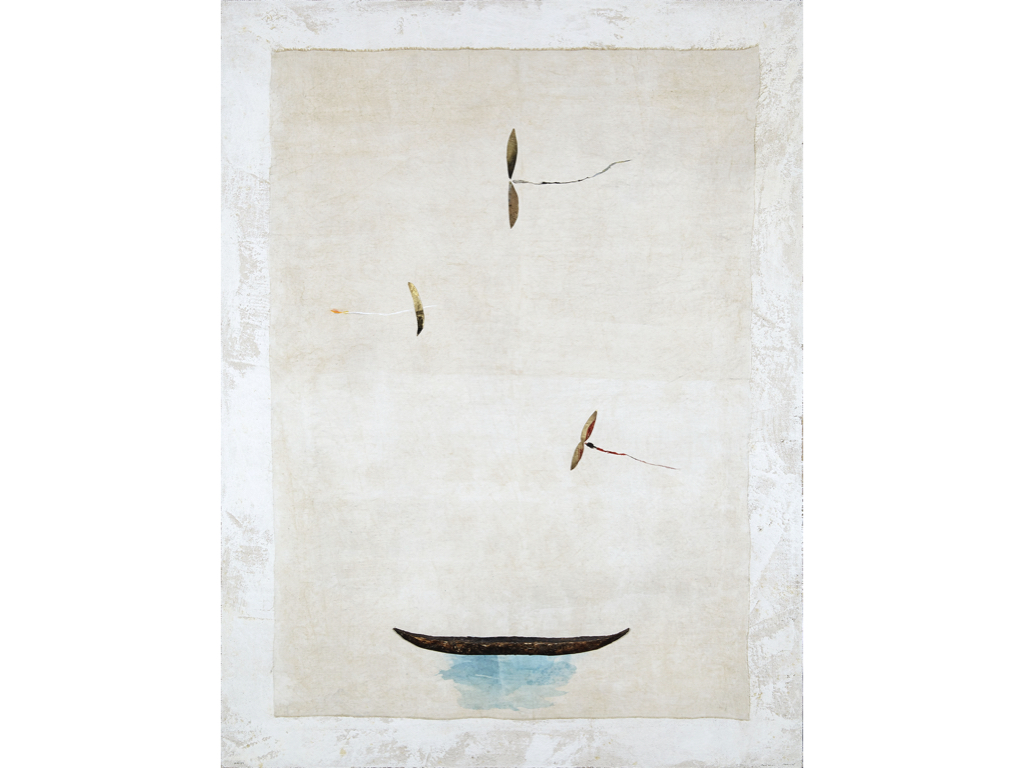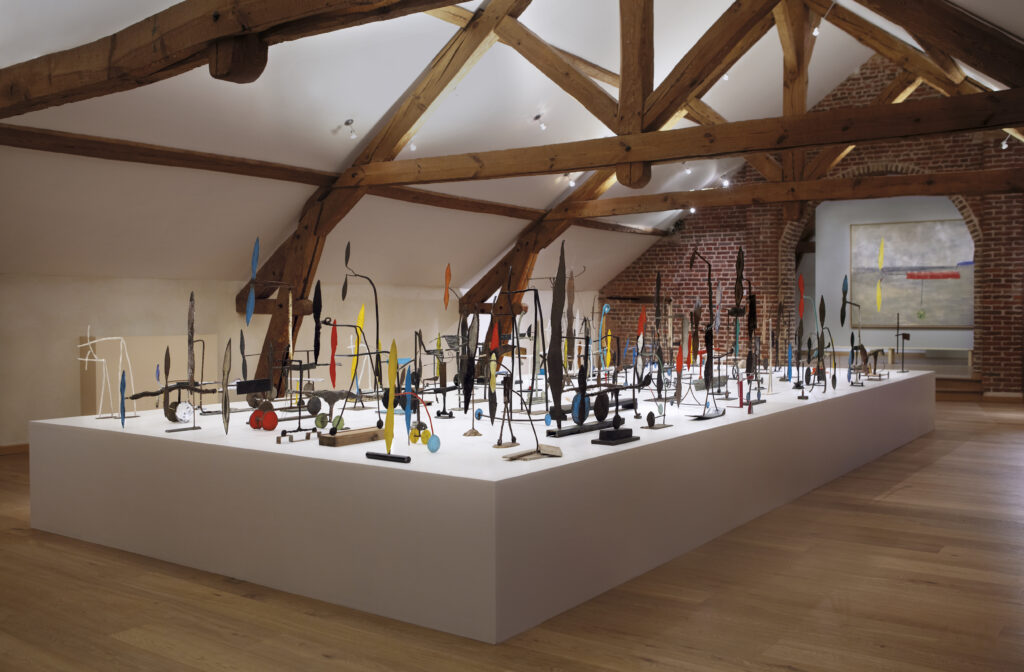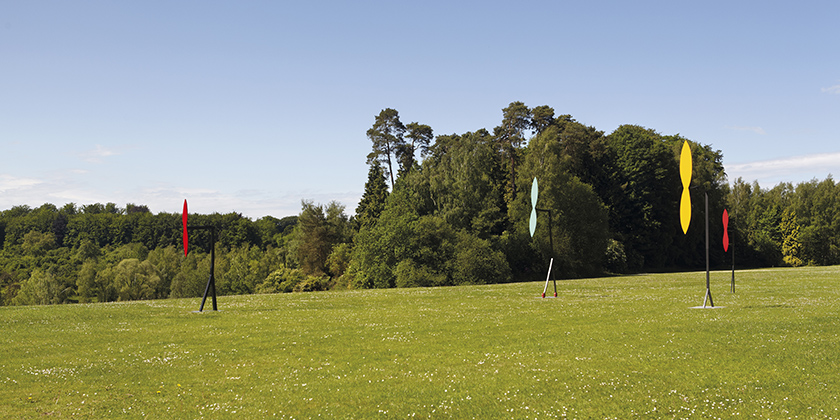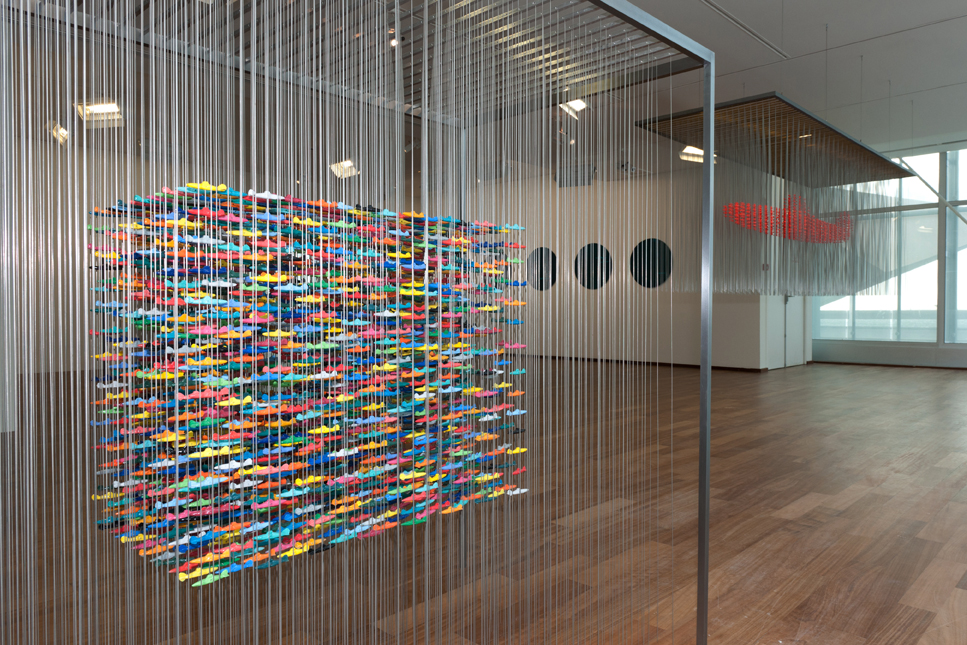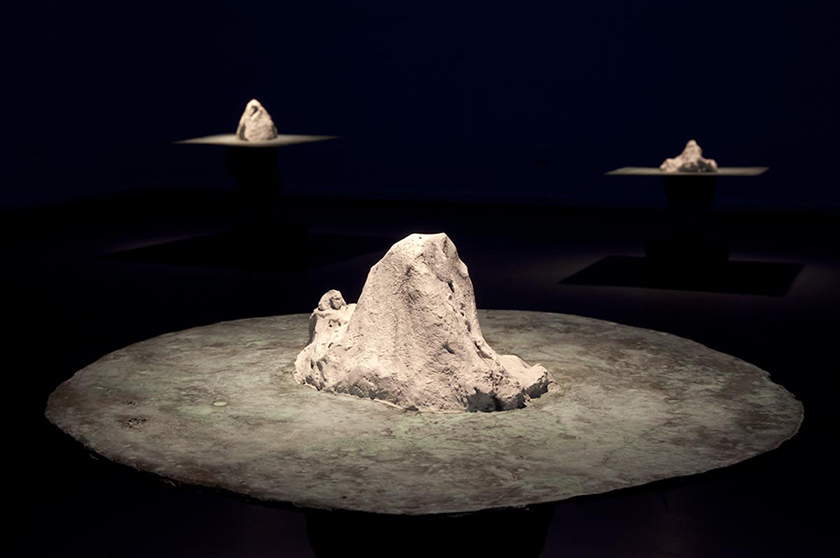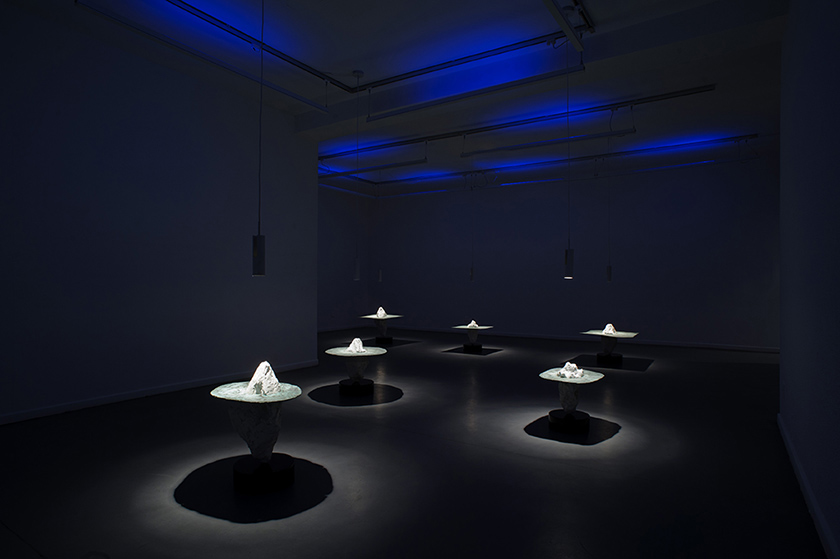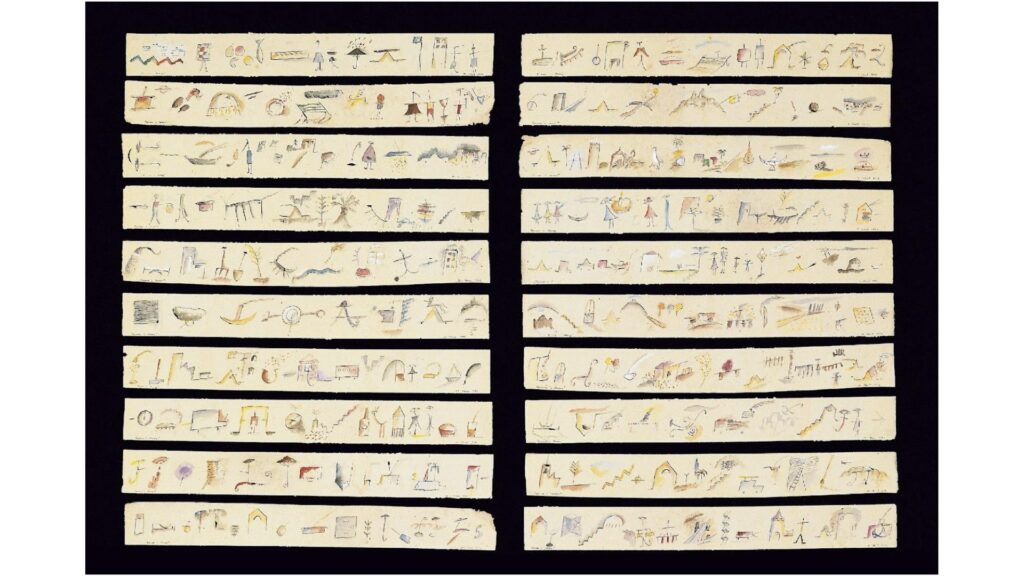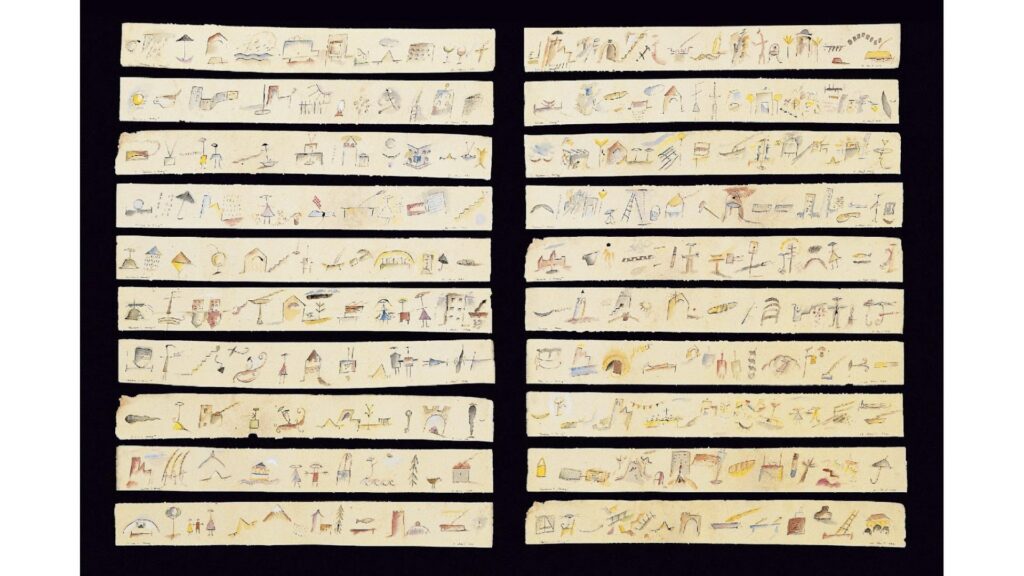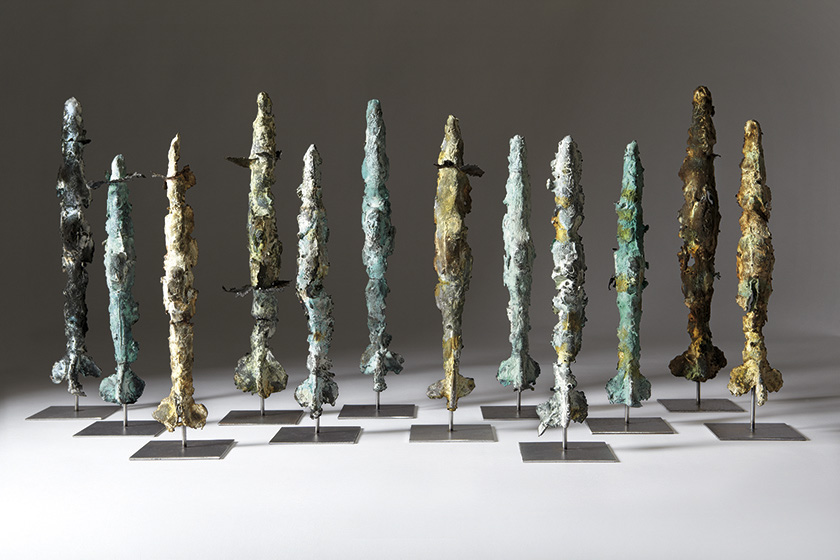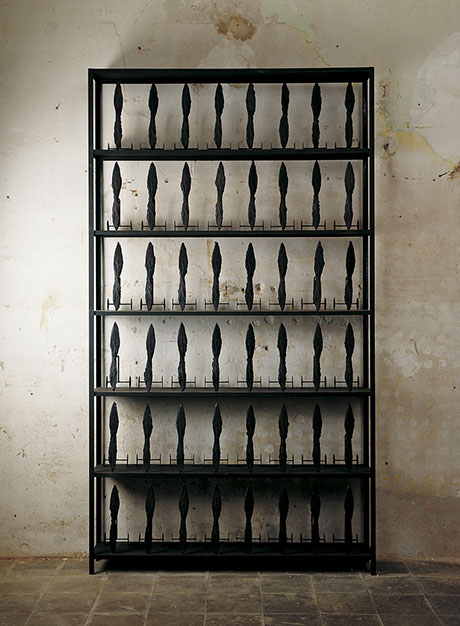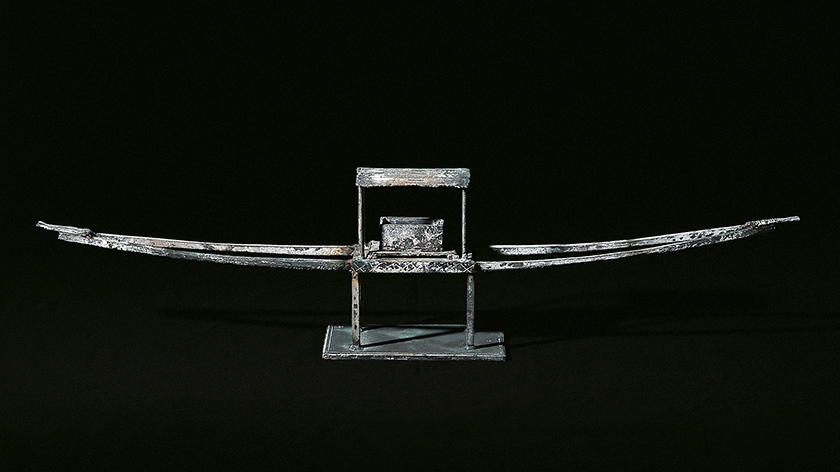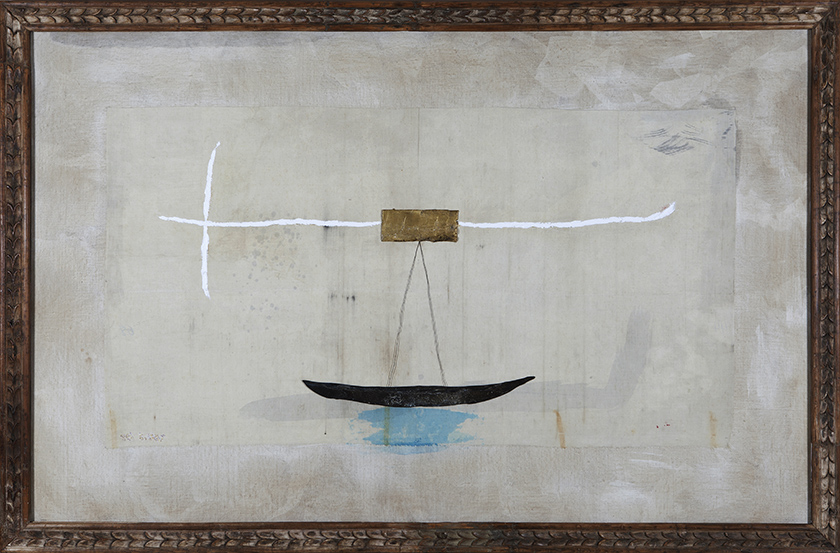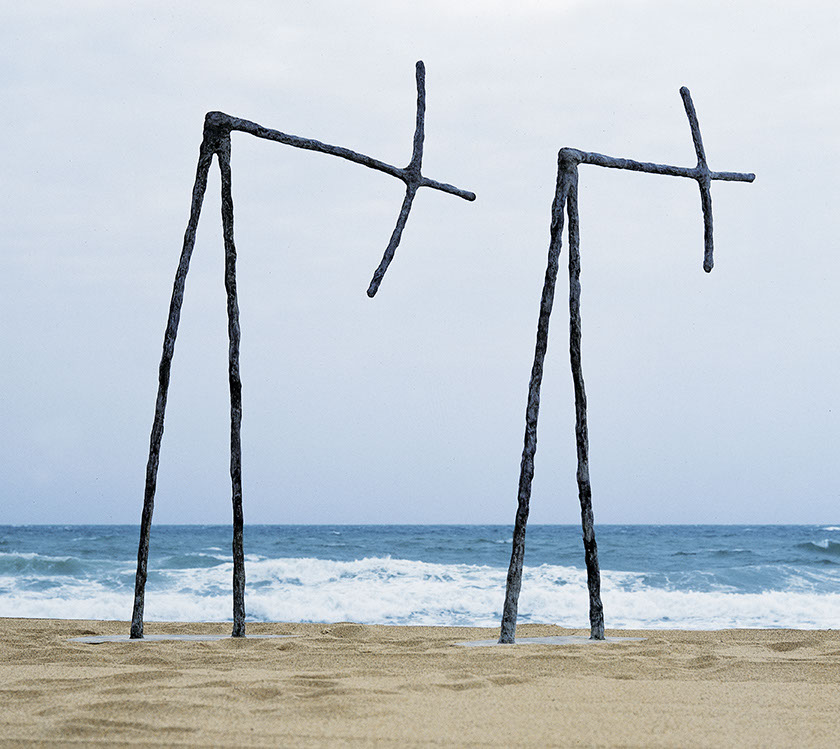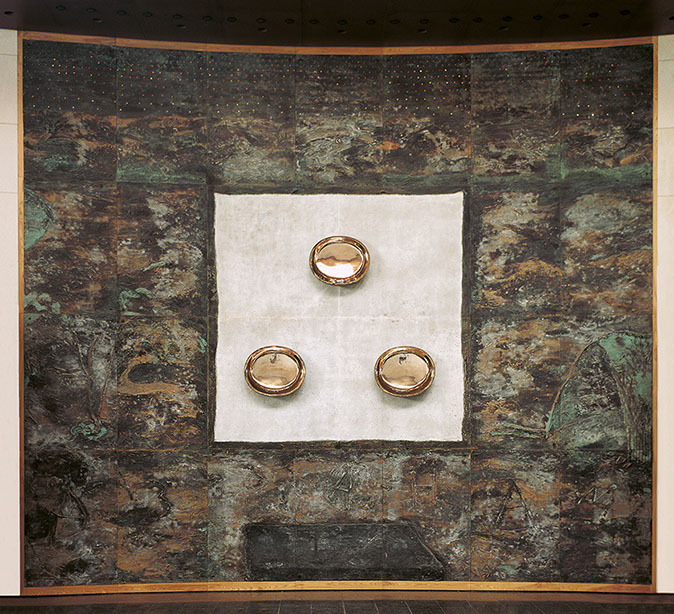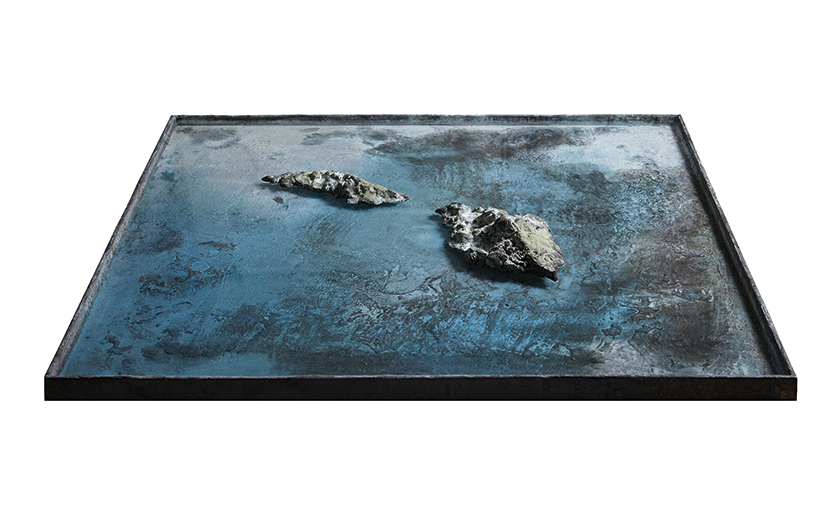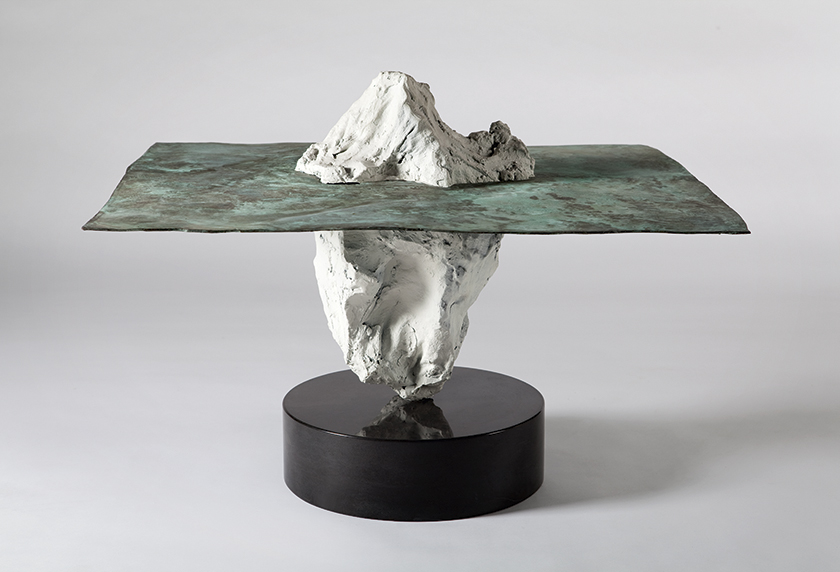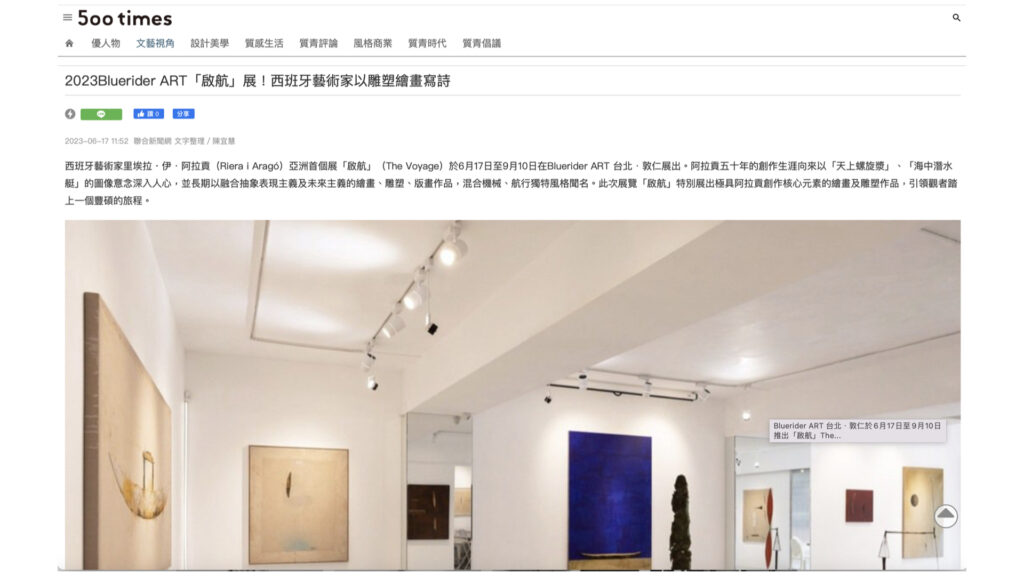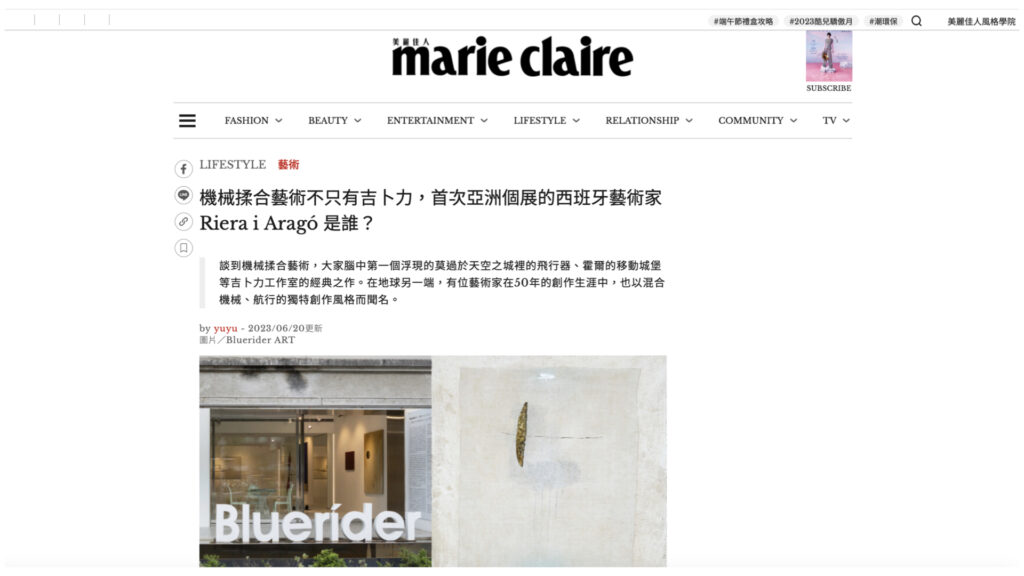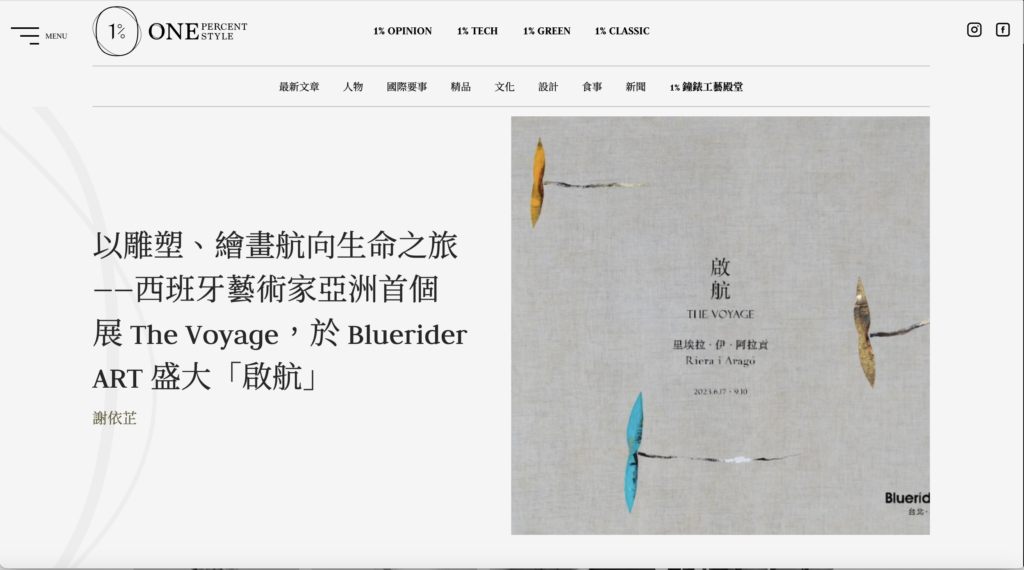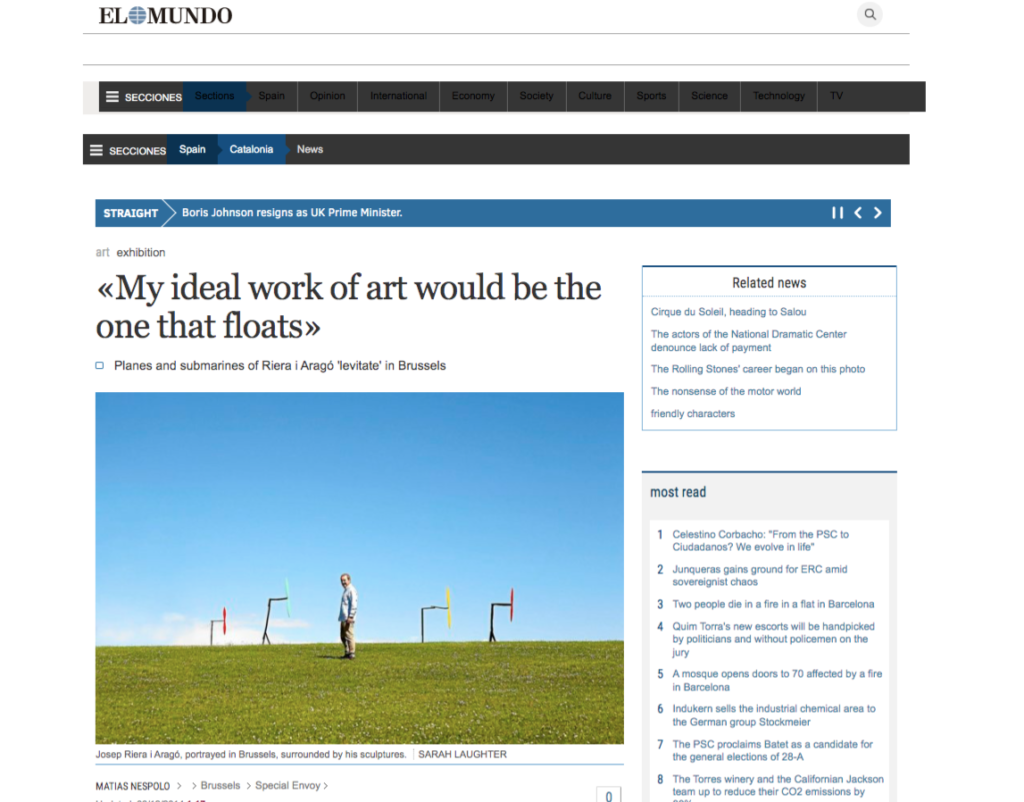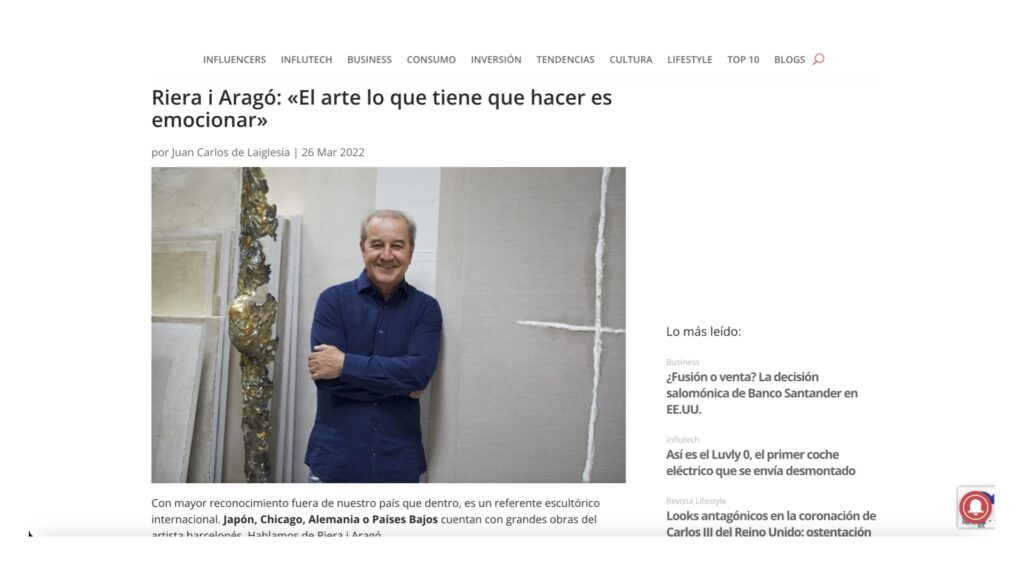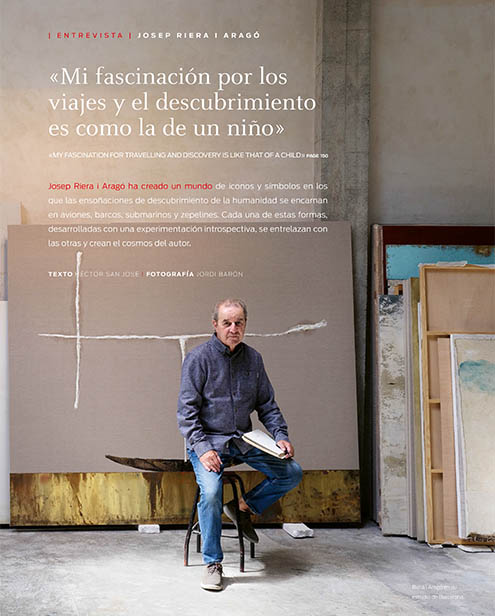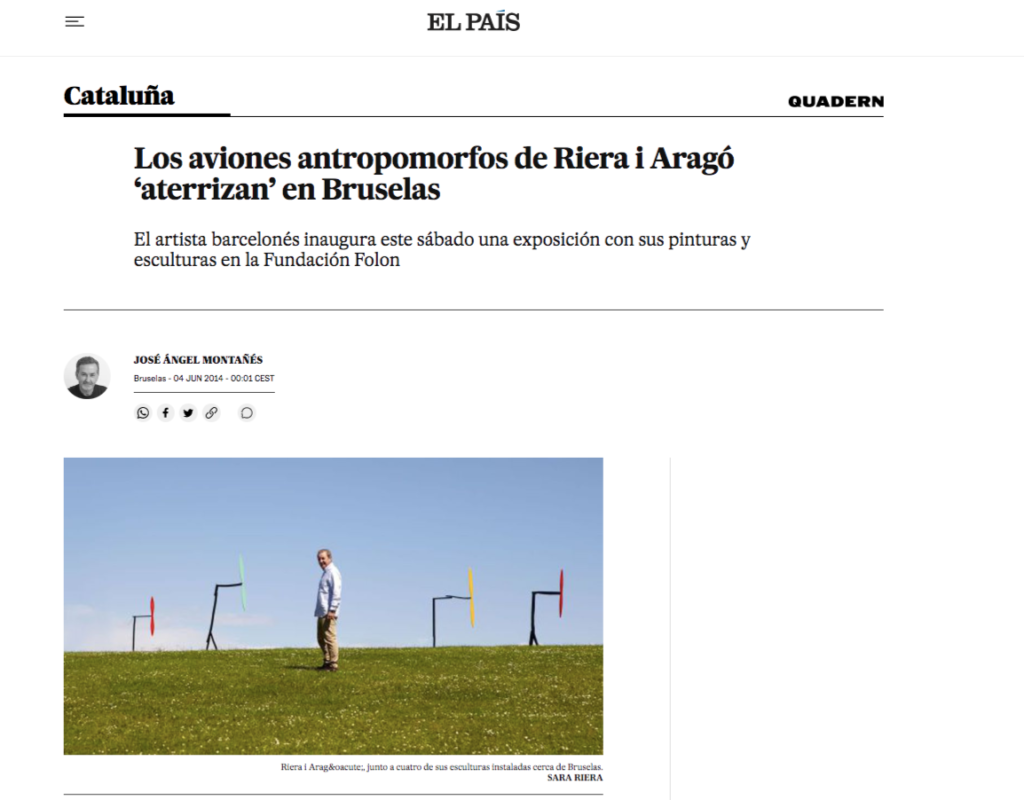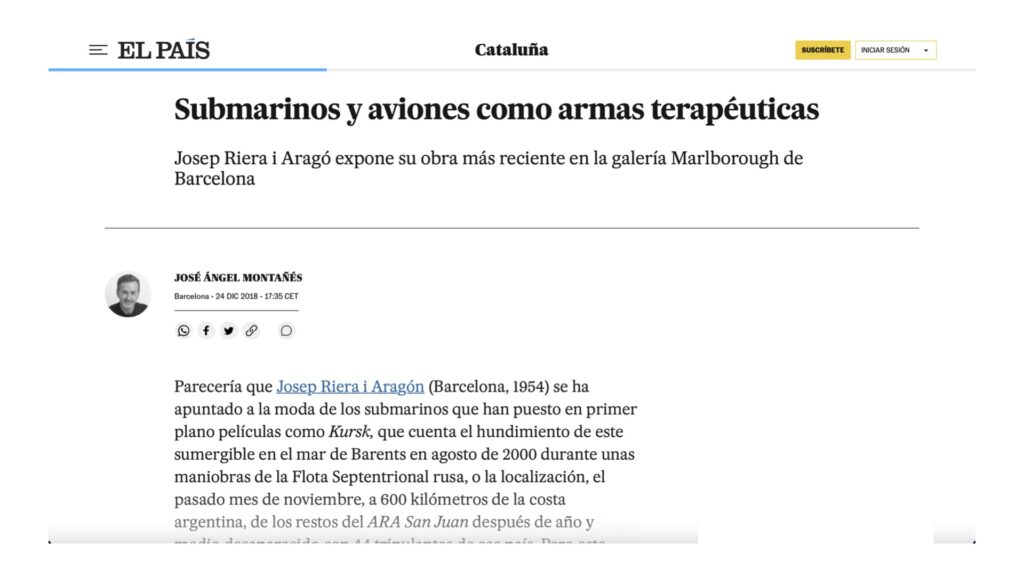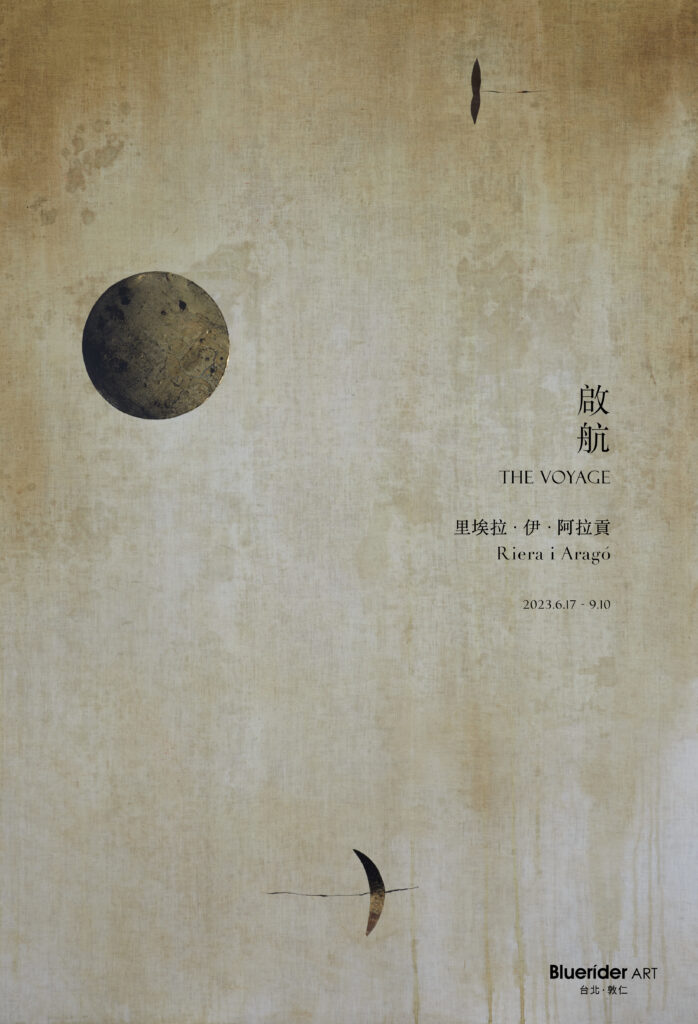

(Spain , b. 1954)
Riera i Aragó (Barcelona 1954) belongs to that generation of artists who in the eighties took up the languages of painting and sculpture, being one of the protagonists of the recovery of the sculptural practice that the avant-garde of the thirties, from of iron, they had begun. After the dematerialization of the work of art that conceptual art entailed, and once pictorial informalism in all its versions had been exhausted, they discovered in the eighties that sculpture unrelated to statuary and naturalism had enormous expressive possibilities and at the same time, he was capable of conversing with the urban scene, the center of modern life. As one of the followers of those avant-garde, in the beginning he maintained a special sensitivity for traditional materials -iron, bronze, wood...-, which, many times, he recovered and recycled to focus all his plastic discourse on the environment of archeology of machinery.
Fondation Folon, Belgium
Musée d’art moderne André Malraux
Musée d’Art moderne de Céret
Musée de Collioure ,France

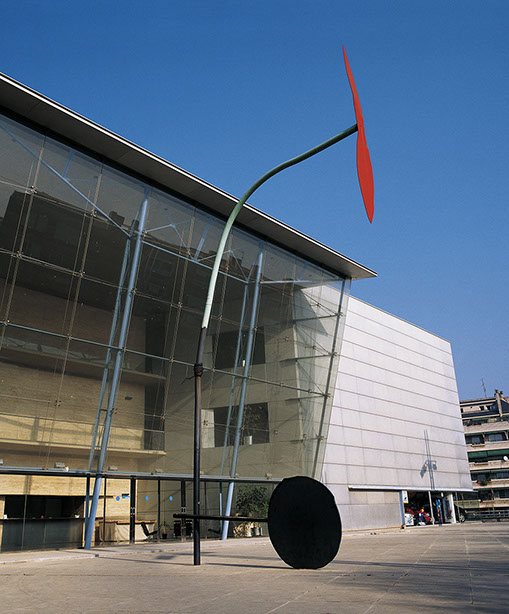
Sant Cugat del Valles, Spain 

Collection Fundació Joan Miró 

Collection Nishinomiya City Hall, Japan
Interested in mechanical gadgets, flying and aquatic artifacts, recreational physics and scientific-literary culture, he has produced a very personal playful and poetic iconography, inspired by the world of submarines, airplanes, zeppelins, boats, all of it on the axis of many of his sculptures and installations. Fascinated, as he has confessed several times, by the unexplored worlds at the bottom of the sea and the immensity of the cosmos, it would be said that Riera i Aragó has made his sculptures to access them, like a castaway needs to build a boat to leave his island and access other lands.
Diary- from 7 March 1982 – 6 March 1983
From the beginning, his work manifested itself as indebted to mechanics, physics and the inspiring principles of modern science. "The machine, its form and its function, are the totems of the 20th century, devices that fascinate the artist and that is why he transforms them into instruments at his service. If in other times the artists had taken the landscape, the mythological narratives or the human figure as inspirational themes, Riera i Aragó opted for one of the most characteristic emblems of his time, the world of the machine and artifacts in general, but he did not do so by following a literal or mimetic realism, but speaking ironically of the machine , of its transience, of its ability to suggest, in a round trip from the real to the imaginary that ultimately makes all these references an immense excuse to make art "(Daniel Giralt Miracle)
Submarines series
Airplanes series
Boat series
Arals series
Low Relief series
Landspace series
If nature had always been present in a certain way in the work of Riera i Aragó, even as a background landscape, as we approach the 21st century the machine changes its non-functionality in a certain way to get closer to the values of environmentalism and nature conservation. Those imaginary spaces for his sculptures, which have always attracted him and which are in fact the natural environment for submarines and airplanes, such as the sea and the air, are now claimed and gain prominence as can be seen in the series of species protected or in the monumental sculptures of the Aral in front of the sea.

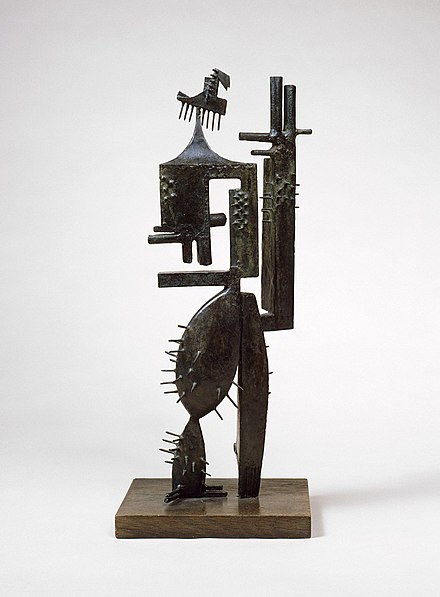
Julio González-Monsieur Cactus (Cactus Man I), 1939 
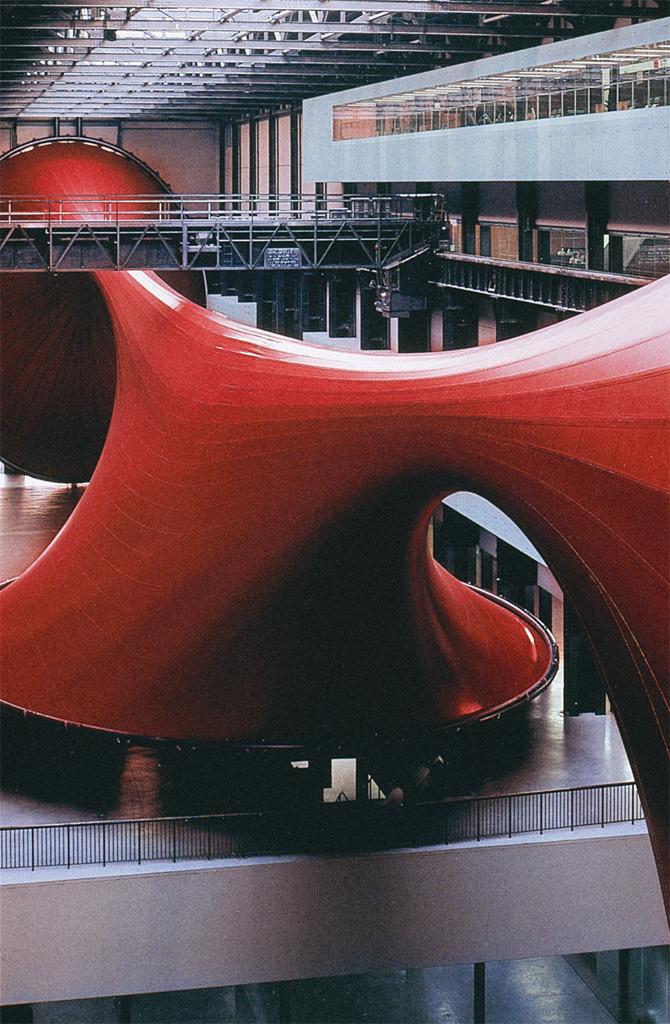
Anish Kapoor – Marsyas, 2002
The work of Riera i Aragó is present in important collections and museums, among others: Musée de Céret, France - Fundació Joan Miró, Barcelona, Spain - Musée d'art modern de Luxembourg, Luxembourg - La Caixa Foundation, Barcelona, Spain - Vincent Van Gogh Foundation, Arles, France - Städtische Museen, Heilbronn, Germany - Musée Réattu, Arles, France - Museum Otani, Nishinomiya, Japan - MACBA, Barcelona, Spain,- Museum of l' Hospitalet, L'Hospitalet, Spain - Rega Collection, Zürich, Switzerland - The Boeing Company, Chicago, USA, - Fran Daurel Foundation, Barcelona, Spain - Museu de Historia de la Ciutat, Girona, Spain - Museu Can Framis, Fundació Vilacasas, Barcelona, Spain - Collectie NOG Van Het. SNS Reaal Fonds, Netherlands - Museu de Montserrat, Barcelona, Spain - Musée de Collioure, France - Musée d'art moderne André Malraux, MuMa Le Havre, France - Union Fenosa Museum of Contemporary Art, La Coruña, Spain.

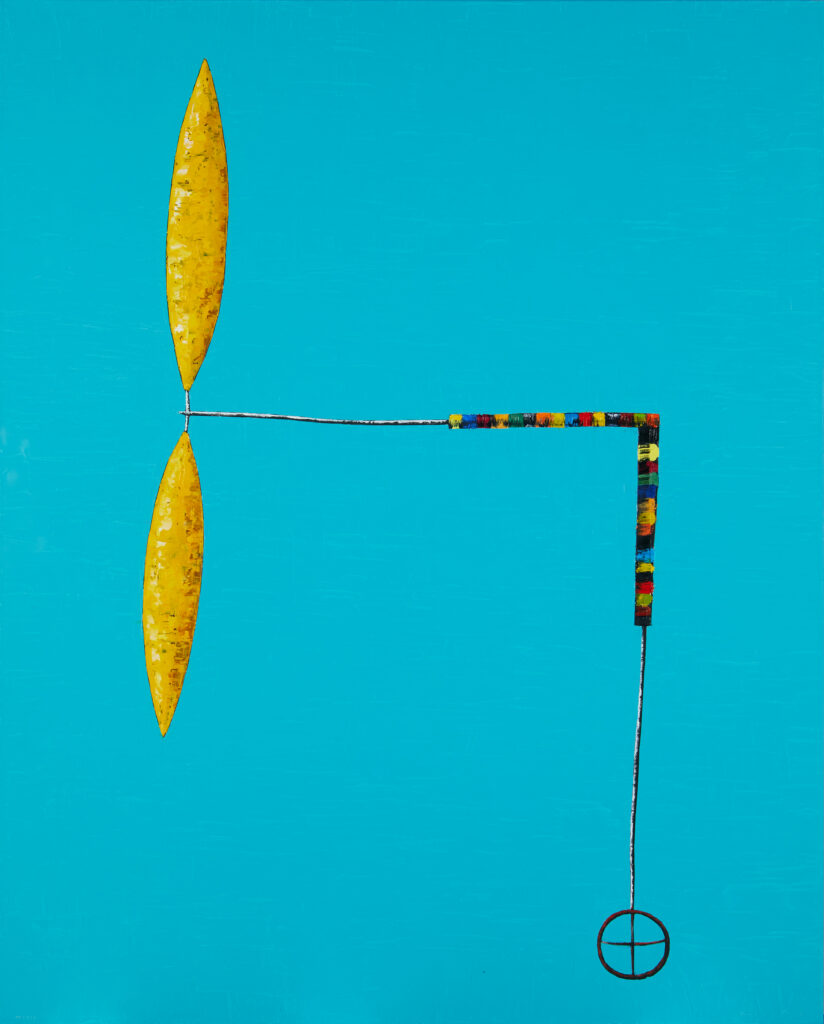
Riera i Aragó|Colored angle airplane on turquois|2019|162x130cm|Oil on canvas 
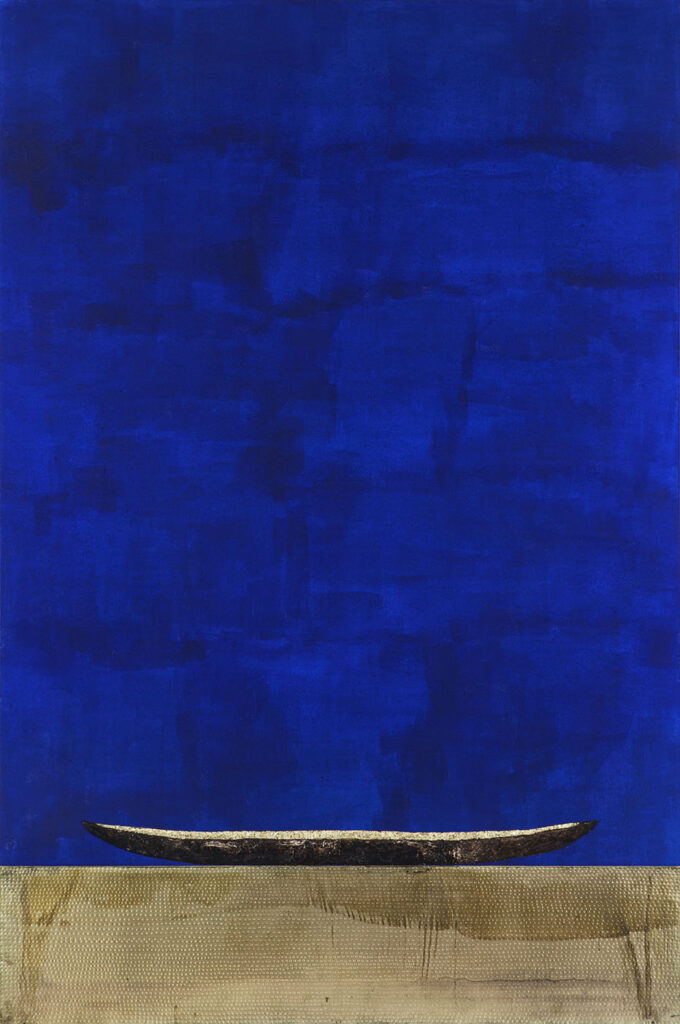
Riera i Aragó|Boat on golden sea|2017|195 x 130 cm|Mixed media and collage (brass, wood) on canvas 

Riera i Aragó|World and two airplanes|2019|162 x 114cm|Mixed media and collage (brass) on canvas



Riera i Aragó|Red propeller airplane|2013|191x106x24cm|Painted iron 


Riera i Aragó|EM1023|2023|14.5×22.6×7.4cm|Painted brass 


Riera i Aragó|EM1223|2023|18×20.6×7.8cm|Painted brass
In addition, he is the author of large sculptures for public spaces.
Among his exhibitions held in recent years, the extensive retrospectives dedicated to him by three museums in France stand out: the Musée d'art modern de Céret and the Musée de Collioure, as well as the Musée d'art Modern André Malraux, MuMa, Le Havre. Also the presentation of his large-scale sculptures in the gardens of the Tournay-Solvay Park in Brussels, within the framework of the exhibition dedicated to him by the Fondation Folon.
Solo Exhibitions
2023 Riera i Aragó. The Voyage. Bluerider Art. Taipei, Taiwan
2023 Josep Riera i Aragó. Der Traum-Reisende. Galerie Boisserėe, Kōln. Alemania
2022 Riera i Aragó. El bell viatge. Galeria Marlborough. Barcelona. España
2021 Riera i Aragó. El viaje silencioso. Galeria Marlborough. Madrid, España
2018 Riera i Aragó. La mirada del geógrafo. Galeria Marlborough, Barcelona. Spain
2018 Galerie Baudoin Lebon. At Élysées, Paris, Francia
2018 Riera I Aragó, Submarins 1985-2018. Fundació Fran Daurel Perramón de Ventalló, Ventalló, Girona, Spain
2017 Art and Advice Gallery, Hasselt, Belgium
2016 Skulpturen, Bilder, Zeichnungen, Galerie Franz Swetec, Darmstadt-Griesheim, Germany
2016 Obra sobre paper i escultures 1988-2015, Galeria Eude, Barcelona, Spain
2016 Oeuvres récentes, Galerie Art Set, Limoges, France
2015 Art Karlsruhe, Galerie Franz Swetec, Karlsruhe, Germany
2015 Skulpturen, Bilder, Zeichnungen, Galerie Franz Swetec, Düsseldorf, Germany
2015 Galeria Sa Pleta Freda, Son Servera, Mallorca, Spain
2014 Riera i Aragó Explorations, Fondation Folon, La Hulpe, Belgium
2014 Summer solstici – Rituals, Tasende Gallery, La Jolla, San Diego,USA
2013 Riera i Aragó, Aguafuertes, Instituto Cervantes, Hamburg, Germany
2013 Riera i Aragó, Aguafuertes, Instituto Cervantes, Bremen, Germany
2013 Riera i Aragó, Prints, Art Partners Finland Oy, Helsinki, Finland
2013 Josep Riera i Aragó 11-12-13, Galerie Baudoin Lebon, Paris, France.
2012 Riera i Aragó, Aguafuertes, Instituto Cervantes, Atenas, Greece
2012 Josep Riera i Aragó, Galerie Art Set , Limoges, France
2012 Riera i Aragó, Aguafuertes, Instituto Cervantes, Varsovia, Poland
2012 Riera i Aragó, Aguafuertes, Instituto Cervantes, Cracovia, Poland
2012 Le rêve du navigateur, Musée d’art moderne André Malraux – MuMa, Le Havre, France
2012 Riera i Aragó, Instituto Cervantes, Frankfurt, Germany
2011 Le rêve du navigateur, Musée d’art Moderne de Céret i Musée de Collioure, France
2011 Obres Selectes, Michael Dunev Art Projects, Torroella de Montgrí, Girona, Spain
2010 RIERA I ARAGÓ. 6.684. Galeria Joan Prats-Artgràfic. Barcelona, Spain
2009 Galerie Hüsstege, Hertogenbosch, Netherlands
2009 RIERA I ARAGÓ. Wege unter dem Waser. Camins sota l’aigua. Kunst Galerie Fürth, Fürth, Germany
2007 Art Ámsterdam, Artline Gallery. Amsterdam, Nertherlands
2007 Artline Gallery, Amsterdam, Netherlands
2007 Espècies protegides Galeria Joan Prats-Artgràfic, Barcelona, Spain
2007 Galeria Múltiple, Madrid, Spain
2006 Galerie Hüsstege, Hertogenbosch, Netherlands
2006 Arals Meet the North Sea, Beaufort 2006, Bredene, PMMK Museum, Belgium
2006 Aguafuertes, Museo Murallas Reales, Ceuta, Spain
2006 Hauser Hofmann, Kunst-Art-Arte, Thayngen, Switzerland
2006 Galeria Arcadi Calzada, Olot, Girona, Spain
2006 Aguafuertes, Musée d’Aalst, Aalst, Belgium
2005 Galerie De Rijk, Den Haag, Netherlands
2005 SE7 Espai d’Art, Xàbia, Alacant, Spain
2005 Michael Dunev Art Projets, Torroella de Montgrí, Girona, Spain
2005 Galeria El Carme, Vic, Spain
2005 Paul Greenaway Gallery, Adelaide, Australia
2004 Illes, Barques, Icebergs. Galeria Joan Prats-Artgràfic, Barcelona, Spain
2004 Los años 80, Galeria Alejandro Sales, Barcelona, Spain
2004 Galerie Denise Van de Velde, Aalst, Belgium
2004 Riera i Aragó, Aiguaforts, Caixa de Girona, Girona, Spain
2003 Galerie Levy, Hamburg, Germany
2003 Galerie Hüsstege, Hertogenbosch, Netherlands
2003 Tasende Gallery, Los Angeles, USA
2003 Tasende Gallery, La Jolla, San Diego, USA
2002 Galerie De Rijk, Den Haag, Netherlands
2002 Lowe Gallery, Atlanta, USA
2002 Galeria Pelaires, Palma de Mallorca, Spain
2001 Galerie Indigo, Damme, Belgium
2001 19 màquines en vol, Museu d’Història de la Ciutat, Girona, Spain
2001 Galerie Denise Van de Velde, Aalst, Belgium
2001 Lowe Gallery, Atlanta, USA
2000 Galerie Hüsstege, Hertogenbosch, Netherlands
2000 Galerie de Rijk, Den Haag, Netherlands
2000 Galeria Joan Prats, Barcelona, Spain
1999 Col.legi d’Arquitectes de Girona, Girona, Spain
1999 Sala Cai Luzán, Zaragoza, Spain
1998 Art Miami 98, Galeria Joan Prats, Miami,USA
1998 Galeria Era Bauró, Andorra.
1998 Galeria Joan Prats, New York, USA
1998 Galeria Pelaires, Palma de Mallorca Spain
1998 Galeria Rosa Pous, Girona Spain
1998 Riera i Aragó a Cap Roig, Fundació Caixa de Girona, Palafrugell, Girona Spain
1998 Riera i Aragó Escultures, Parc Nou d’Olot, Girona, Spain
1998 Galerie La Cité, Luxembourg.
1998 Galerie de Rijk, Den Haag, Netherlands
1998 Art Cologne’98, Galerie Franz Swetec, Colònia, Germany.
1998 Galerie Franz Swetec, Darmstadt, Germany
1998 Riera i Aragó, Galería Zaragoza Gráfica, Zaragoza, Spain
1997 Galeria d’Art Arcadi Calzada, Olot, Girona, Spain
1997 PMMK, Museum voor Moderne Kunst, Oostende, Belgium.
1997 Galeria d’Art Horizon, Colera, Girona, Spain
1997 Galerie Denise Van de Velde, Aalst, Belgium
1997 Artline Gallery, Amsterdam, Netherlands
1997 Galerie Pro Arte, Friburg, Germany
1997 Künst ’97, Zürich, Galerie Denise Van de Velde, Switzerland
1997 Festival Garonne, Pont Neuf, Toulousse, France
1997 Galerie Hüsstege, Hertogenbosch, Netherlands
1996 Galería Garcés Velásquez, Bogotà, Colombia.
1996 Galeria Joan Prats, Barcelona, Spain
1996 Art Cologne ’96, Galerie Boisserée, Köln, Germany
1996 Städtische Museen, Heilbronn,Germany
1996 Fondation Vincent van Gogh, Arles, France
1996 Casal Solleric, Ajuntament de Palma, Palma de Mallorca, Spain
1995 Galeria Joan Prats – Artgràfic, Barcelona, Spain
1995 Galerie Marwan Hoss, París, France
1995 Galeria Cyprus, Sant Feliu de Boada, Girona, Spain
1995 Galerie La Cité, Luxembourg.
1995 Galerie Denise Van de Velde, Aalst, Belgium
1994 ARCO ’94, Galerie Denise Van de Velde, Madrid, Spain
1994 Galerie Denise Van de Velde, Aalst, Belgium
1993 Galeria Rita García, València, Belgium
1993 ARCO ’93, Galerie Denise Van de Velde, Madrid, Spain
1993 Galeria Sa Pleta Freda, Son Servera, Mallorca, Spain
1993 Estampa ’93, Boza Editor, Madrid, Spain
1993 Galeria Era Bauro, Andorra.
1993 Art Multiple ’93, Boza Editor, Düsseldorf, Germany
1993 Galeria Joan Mas. Aiguaforts. Cadaqués, Girona, Spain
1993 Bibliothèque Nationale, Boza Editor, París, France
1992 ARCO ’92, Galerie Denise Van de Velde, Madrid.
1992 ARCO ’92, Vera Van Laer Gallery, Madrid.
1991 ARCO ’91, Vera Van Laer Gallery, Madrid.
1991 ARCO ’91, Galerie Denise Van de Velde, Madrid.
1991 Franz Swetec Gallery, Düsseldorf, Germany
1991 Galeria Joan Prats – Artgràfic, Barcelona, Spain
1991 Galeria 13, Ventalló, Girona, Spain
1990 Vera Van Laer Gallery, Knokke, Belgium
1990 Galerie La Cité, Luxembourg
1989 Galerie Boisserée, Colònia, Germany
1989 Arran d’aire, Antic Escorxador, Figueres, Girona, Spain
1989 Musée d’Art Moderne, Collioure, France
1989 Museu de Ceret, Ceret, France
1989 Galerie Boulakia, París, France
1989 FIAC’89, Galerie Boulakia, Paris, France
1988 Galería Columela, Madrid, Spain
1988 Galeria Sebastià Petit, Lleida, Spain
1988 Galeria Contemporáneo, Jesi, Italy .
1988 Galerie Denise Van de Velde, Aalst, Belgium
1988 Galeria 24, Barcelona, Spain
1987 ARCO ’87, Galeria Rene Metras. Espai Joan Mas, Madrid.
1986 Galeria Guereta, Barcelona, Spain
1985 Galeria Joan Prats, Barcelona, Spain
1984 Espai 10, Fundació Joan Miró, Barcelona, Spain
1983 Molí Casals, Calonge, Girona, Spain
1981 Institut d’Estudis Nord-americans, Barcelona, Spain
1980 Galeria Gurb 63, Vic, Barcelona, Spain
1980 Galeria Artema, Barcelona, Spain
1979 Galeria Vergara Ocho, Barcelona, Spain
1979 Galeria Tamariu, Palafrugell, Girona, Spain
1979 Galeria Palau de Caramany, Girona, Spain
1978 Galeria Roma, Barcelona, Spain
1978 Galeria Tamariu, Palafrugell, Girona, Spain
1977 Galeria Bonanova, Barcelona, Spain
1977 Art Galeria Covarsi, Arenys de Mar, Barcelona. Spain
1975 Galeria Anglada, Barcelona, Spain
1975 Galeria Estudi Athenea, Barcelona, Spain
1974 Galeria Anglada, Barcelona, Spain
1973 Galeria Anglada, Barcelona, Spain
WORKS IN MUSEUMS AND SELECTED COLLECTIONS
Ajuntament de Barcelona (Escultura pública)
Ajuntament de Figueres, Girona (Escultura pública)
Ajuntament de Sant Cugat, Barcelona (Escultura pública)
CODA Museum, Apeldoorn, Países Bajos
Col.lecció Institut d’Estudis Catalans, Barcelona
Col.lecció Institut d’Estudis Nord-americans, Barcelona
Col.lecció Testimoni. Fundació “La Caixa”, Barcelona
Col·lecció Bassat d’Art Contemporani, Barcelona
Col·lecció Creu Roja de Catalunya, Barcelona
Colección BBVA, Madrid, Spain
Colección CAI Luzán, Zaragoza
Colección OlorVisual, Ernesto Ventós, Barcelona
Coleccion Pere Serra, Soller, Mallorca
Colección Rega, Zürich, Suiza
Collectie NOG Van Het. SNS Reaal Fonds, Países Bajos
Fondation Vincent Van Gogh, Arles, Francia
Fons d’art del diari Avui, Barcelona
Fundació Joan Miró, Barcelona
Fundació Perramón de Ventalló Art Contemporani, Ventalló, Girona
Fundación Fran Daurel, Barcelona
Municipality of Roosendaal, Paises Bajos (Escultura pública)
Museu d’Art contemporani, MACBA, Barcelona
Musée d’art moderne André Malraux, MuMa Le Havre, Francia
Musée d’Art Moderne, Luxembourg
Musée d’art moderne de Céret, Francia
Musée de Collioure, Francia
Musée Réattu, Arles, Francia
Museo de Arte Contemporáneo Union Fenosa, La Coruña
Museu Arxiu de Llavaneres, Barcelona
Museu Can Framis, Fundació Vilacasas, Barcelona
Museu Can Mario, Fundació Vilacasas, Palafrugell, Girona
Museu d’Historia de la Ciutat, Girona
Museu de l’Hospitalet, Hospitalet de Llobregat
Museu de Montserrat, Barcelona
Museu de Valls, Tarragona
Museum Otani, Nishinomiya, Japón
Nishinomiya City Hall, Japón (Escultura pública)
Parc d’escultures Jardins de Cap Roig, Obra Social La Caixa, Girona
Reflex Museum, Amsterdam, Países Bajos
Stiftung Nantesbusch Sammlung, München, Alemania
Stadhuis Mesen, Bélgica (Escultura pública)
Städtische Museen, Heilbronn, Alemania
Stedelijk Museum Schiedam, Países Bajos
The Boeing Company, Chicago, USA
Universitat Pompeu Fabra, Barcelona
Universitat Ramon Llull, Barcelona
